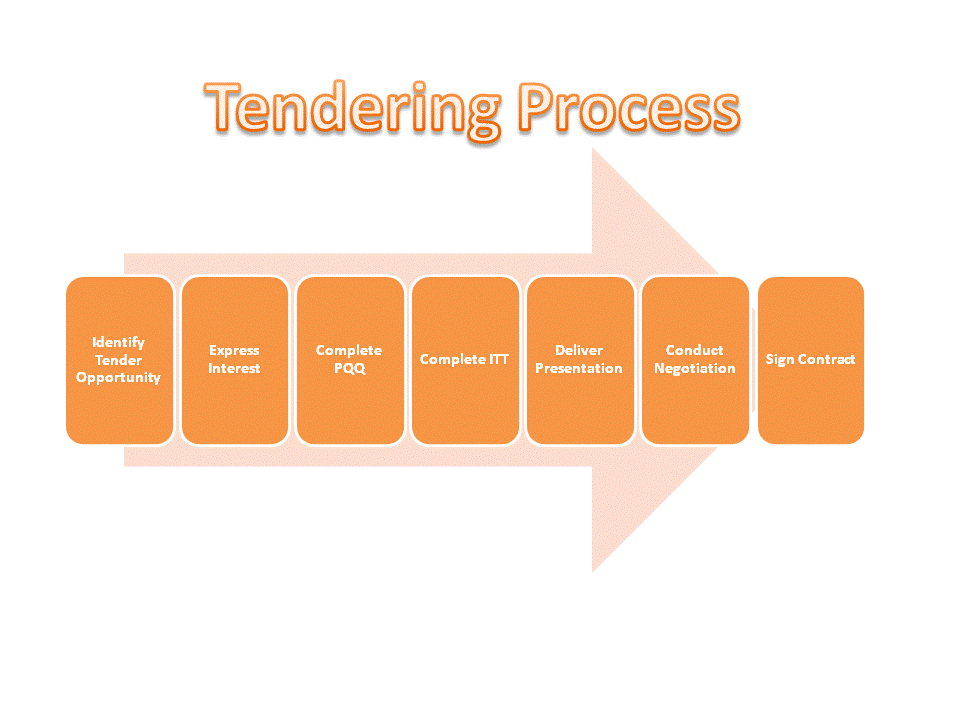Identify Tender Opportunity
The first step in the tender process is to identify a potentially fruitful opportunity. There are many tender alert services that can provide filtered information about potential opportunities.

Express Interest
It may be that before you are given full access to the tender documentation you have to express interest. This may be through an on line portal, or it may be directly with the tendering organisation. Once you have the tender documentation you can decide whether or not to proceed with the tender. If you decide to opt out you should make sure that you have notified the tendering organisation.
Complete Pre-qualification Questionnaire (PQQ)
This is likely to be the stage involving a whole load of work, and, potentially, a lot of stress. There will be a strict deadline for submission of information. It will be permitted for questions to be asked during this stage of the tender process, but all tenderers will be advised of both questions and responses.
Complete Invitation to Tender (ITT)
Following the PQQ a short list of tenderers will probably be drawn up. These businesses will be invited to submit their bid. This will comprise their commercial proposals (pricing etc.) for the contract.
Deliver Presentation
The final few bidders may be invited to present. This will be the opportunity to sell! It will also be the occasion on which you are asked probing questions about your proposal and bid. Importantly, at this stage in the tender process the dialogue will start to become a little less formal, with a dialogue beginning to develop.
Conduct Negotiation
The final selection, down to one potential supplier, will be made, and the selected company will most likely be subject to negotiation. This is the part of the tender process which may make the difference between a good contract, and one which is much less viable.
Sign Contract
Once all the above stages of the tender process have been completed all that needs to be done is for the contract to be signed and the contract to be mobilised.